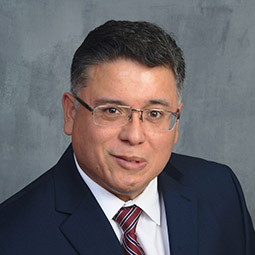On June 16, President Biden’s nomination of Doug Parker as director of the Occupational Safety and Health Administration (OSHA) moved closer to Senate confirmation with a 13-9 vote by the Health, Education, Labor and Pensions Committee. Parker currently serves as California’s OSHA (Cal/OSHA) director and previously served under Obama’s administration as the Mine Safety and Health Administration (MSHA) policy manager. Parker spearheaded Cal/OSHA’s Emergency Temporary Standard (ETS) for COVID-19 and is expected to continue promulgating federal OSHA’s COVID-19 ETS. Cal/OSHA has a reputation for its robust program, with several workplace standards that are more stringent than, or don’t exist in, the federal arena – which many speculate is a harbinger of what’s to come.
Viewpoints from Chris Mancillas
Several clients have asked me if OSHA will be significantly transformed under the new Biden administration.
All signs point to a tougher version of the Department of Labor (DOL), including OSHA and the MSHA, compared to the one under President Obama. Companies will need to prepare for a more aggressive OSHA with new standards, more inspections and higher fines.
Among possible areas of change being discussed in legal circles is publishing company results of the electronic reporting rule, passed in 2016.
Although Trump’s OSHA didn’t repeal the rule, it never posted incident rates online for public viewing. This rule may end up being enforced, with employer requirements to report more detailed injury information. Another rule that was not fully enforced under Trump’s administration is the prohibition of blanket, post-accident drug testing policies, rather than those based on reasonable suspicion.
Outside of speculation over changes following Parker’s impending confirmation, there is already one hot-button standard on the books for 2021 – the COVID-19 ETS.
Four states have their interpretation of COVID-19 ETS in place and federal OSHA recently announced that enforcement of its COVID-19 ETS is tailored toward the healthcare industry, with a newly published “strong” guidance for all other employers. As such, OSHA will have to resort mostly to its General Duty Clause to enforce the recommended Centers for Disease Control and Prevention (CDC) guidelines for non-healthcare industries. A national emphasis program was introduced on March 12, and revised on July 7, to focus inspections on industries where workers are known to operate close together (large warehouses, stores and meat processing plants).
And on May 20, OSHA proposed an update to the handrail and stair rail provisions of its 2016 final rule on walking-working surfaces.
The proposed changes are intended to eliminate confusion as to “when handrails are required on stairs as well as what the height requirements are for handrails on stairs and for stair rail systems, depending on date of installation.”
Regarding OSHA enforcement activity, there are plans to significantly increase field staff, as evidenced by the administration’s 2022 budget proposal currently being debated in Congress.
The current budget request for OSHA is a 12% increase, or $73 million more in funding, to meet Biden’s goal to increase the number of OSHA inspectors. When Trump left office, there were 790 inspectors in the federal agency and 800 inspectors in Obama’s final year in office. However, Biden has called for doubling the number of OSHA inspectors by 2024, looking to surpass the peak of 1,470 inspectors in 1980. The immediate goal for fiscal year 2022 is to hire 370 new inspectors. The emphasis will likely be on multilingual candidates and those filtering through universities that offer safety degrees.
The consensus is that OSHA will be tougher all around.
22 states currently run OSHA programs and none may have any standard less stringent than those of federal OSHA. Look for more collaboration with, and oversight of, state OSHA programs to ensure compliance under the new Biden OSHA administration.
EPIC offers this material for general information only. EPIC does not intend this material to be, nor may any person receiving this information construe or rely on this material as, tax or legal advice. The matters addressed in this document and any related discussions or correspondence should be reviewed and discussed with legal counsel prior to acting or relying on these materials.
Related Content
Products
Risk Management
Our experienced teams take an enterprise-wide approach, consulting closely with you to identify, analyze and ...
Industries
Construction
A professional team of nationwide specialists dedicated to delivering impactful risk management and insurance ...
Industries
Agribusiness
The climate of agribusiness is changing, and it is a priority of all those in the industry to be aware of ...



